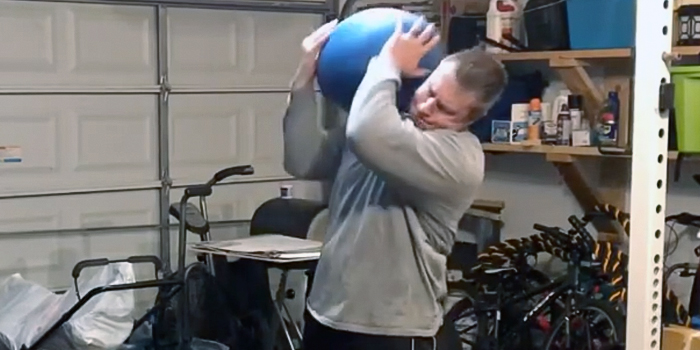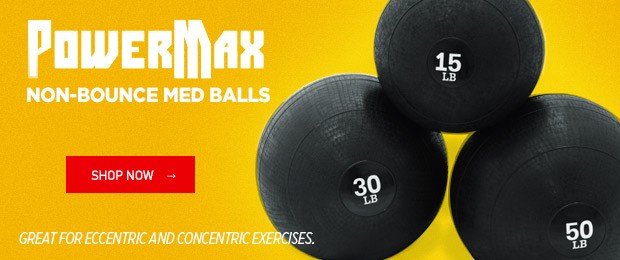
General physical preparedness (GPP) is the base of the strength pyramid. As your GPP grows, so does your potential for specific physical preparedness. For athletes, lifting weights is GPP. For powerlifters, squatting, benching, and deadlifting is GPP (while things like sled dragging, med ball work, and Prowler® work are all GPP). This type of training allows for a very different kind of training and movement for the athlete. If you are out of shape, you can’t train effectively.
During this time of the COVID-19 and gym closures, you might not be able to do the heavy barbell work you need, but that doesn’t mean you can’t make gains. Now is the time to treat this like a GPP intensive cycle. Perform what strength work you can but work to get into shape, so when the gyms re-open, you can hit the ground running.
I love GPP work. It allows me to be outside and reminds me of my youth when I was training for football and wrestling. Running is out of the picture with my current knee situation. I love the sled, but if the weather is bad, that is out the window. Med balls though, can be done in and outside. You can work in every plane imaginable, use them for recovery, and as weight in your main workouts. This article is about GPP and how you can get in shape with an idea that dates back a few hundred years.
RECENT: 8 Lightweight Exercises for a Massive Shoulder Pump
If you want to get in shape, you need balls! There are bouncy balls, soft balls, big balls, small balls, and balls that splat. The ones filled with sand are my go-to for most of my work. Balls that bounce have a place but not for what I want to accomplish. I am listing my 11 favorite moves with a med ball (and there are even more).
Med Ball Slams
Ball slams don’t take up much space. You can do them outside, on concrete (depending on the ball), in the grass, or even your basement. I don’t think I need to explain how to do them, so I will keep it short and sweet. Pick up a ball, reach high overhead, and forcefully throw it down. If your ball bounces be careful not to get hit in the face.
These are great for warm-ups or when added into extra workouts. Slam for reps, time, or while a partner is doing something else. Just do the work.
Med Ball Carries
Heavy med ball carries are deceiving. They appear to be easy, but these are no joke when you keep the ball where it needs to be—on top of your belly button. Static work for your forearms, biceps, lats, upper back, and abs all while working your hamstrings, glutes, and low back. Have records for ¼, ½, and 1 mile. Med balls as heavy as 60 or 100 pounds can be a challenge. Stop and rest as needed but work to improve your times or distance carried before stopping.
Med Ball Carries While Sled Dragging
Carries while pulling a sled can really put a hurting on you. After you are in good shape with pulling a sled and carries independently, try pairing them together. Belt dragging will give you a forward lean, and carrying a heavy med ball at the abdomen level will produce more of a backward lean. Together they put you somewhere in the middle, making it a little different. I prefer to lighten the sled for this exercise and keep the distance in the 30- to 40-yard range. Take a wider than shoulder-width walking stance and pull with your heels. Keep the feet wide. And waddle like a pregnant lady. Keep the ball right at your belly button and keep on stepping. If you are feeling frisky, keep going for a ½ mile. Med Ball Carries While Sled Dragging is perfect for an off day after a lower-body workout.
Clint Darden Strongman Slam (Warm-up)
This is going to be very similar to a normal slam with a slight change in how it is performed. You want to open everything up before the slam. Taking the med ball behind the head, stand up tall before pulling it back over, and slam it. The focus is more on the standing tall and stretching than the slam itself. This is strictly for warming up. A few sets to get you moving is all you need.
Basket Toss for Height
If you are looking for triple extension here, you go. These can replace dynamic effort for those of you needing something explosive while on quarantine. A 15- to 25-pound med ball works well for my needs. Again, I prefer a nonbouncing ball. Be careful where you toss these. If you lose one, you or the ball can cause damage if it hits a car or person.
Try to be an athlete, not how I look in the video.
Backward Throw Overhead
Here is another distance movement. Backward Throw Overheads can be done back and forth or over a longer distance if space allows. Be explosive and maximize your distance before jogging to the next position. It's similar to the basket toss for height, except now we are looking for a horizontal movement. This is also another simple movement that even young kids will enjoy. Give your young’ens a ball, and they can do their own work.
Walk and Toss
For those of you in higher weight classes, this is a great place to start. Walk at a brisk pace or jog if it won’t kill your feet and ankles. Overhead throw or chest pass the ball and move to it. You want to elevate your heart rate some, so don’t treat it like a leisure walk.
Start with a ¼ mile and work up your distance. You want to be refreshed for your next workout. If your main workout performance is dropping or your joints hurt, then choose a different movement.
Chest Pass for Distance
This is a variation of the walk and toss. You want to sit down on each toss before getting up and chasing after the ball. If you are limited in space or can’t walk on a busy road, these present a slightly different challenge. Increase the difficulty by adding a weighted belt or weight vest.
Overhead Carry
There are two versions of the overhead carry. The first is the double-handed—shoulder mobility is important here. Lighter balls with a bigger diameter are great for this exercise.
The second version is the waiter's carry. Single-handed, you will keep the ball supported on one side. Alternate arms when needed, but make sure it is a measurable distance. This will require more shoulder stability and torso work.
Shouldering
Med ball shouldering is a small space exercise. I am not a strongman, so I am not overly worried about my technique, but I am sure I could clean it up. This will be more explosive than a loading technique so the ball can reach the shoulders. As the weight increases, you will need to be more explosive from the belly right to the shoulder. As an extra workout or warm-up, this is a good alternative if you have some heavier balls.
A post shared by Matt Ladewski (@regionbarbell) on
Med Ball Lift and Load
You will want a heavier med ball for this exercise. I have used it as a warm-up and for extra work. I use a 60- or a 100-pounder depending on the day. I use a band across the j-hooks of my rack to determine the height. Like a strongman would load a stone, I mimic a similar technique. It is not exactly the same, but close enough. Sets of five to eight work for my warm-up. For extra work, try hitting a number over a certain timeframe, resting as needed. Start with 50 and set your time. Next time, beat that number or extend the time and try for 75 or even 100. But remember, this is an extra workout and should not be detrimental to any main workout.
GPP training does not have to be boring and can be done almost anywhere. With gyms closed and limited equipment available, keep this option open. Grab your balls and get to work.










